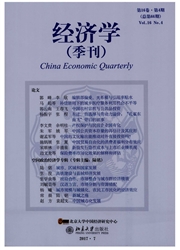

 中文摘要:
中文摘要:
本文针对通常以为的"越漂亮,收入越高"的观点,提出了"相貌与收入呈高跟鞋曲线"的命题,即漂亮总体上有助于提升收入,但最漂亮那一类人的漂亮溢价却没有次美者高。将相貌作为一种"人际技能信号"来阐释相貌对收入的影响机理,在一定程度上拓展了劳动力市场信号理论。同时,利用上海社科院人口研究所"流动和常住人口的家计调查"(SASS1996)和中国家庭动态跟踪调查(CFPS2012)数据,各有侧重地实证了上述命题。本文的研究结论有助于更深入地理解人们在职场上的"审美观",更智慧地塑造自我形象,更理性地追求美。
 英文摘要:
英文摘要:
In this paper we distinguish the strikingly beautiful from the above-average and put forward a hypothesis of the high heel curve which describes the relationship between appearance (or physical appearance) and earnings. Unlike the previous literature, we regard appearance as a signal of interpersonal skills and explain the non-monotonic relationship between looks and earnings. We use two data sets, Shanghai Academy of Social Science 1996 and China Family Panel Study 2012, to examine the hypothesis and influence mechanism. The empirical analysis shows that the above-average gain the highest earnings after controlling their personal characteristics.
 同期刊论文项目
同期刊论文项目
 同项目期刊论文
同项目期刊论文
 期刊信息
期刊信息
